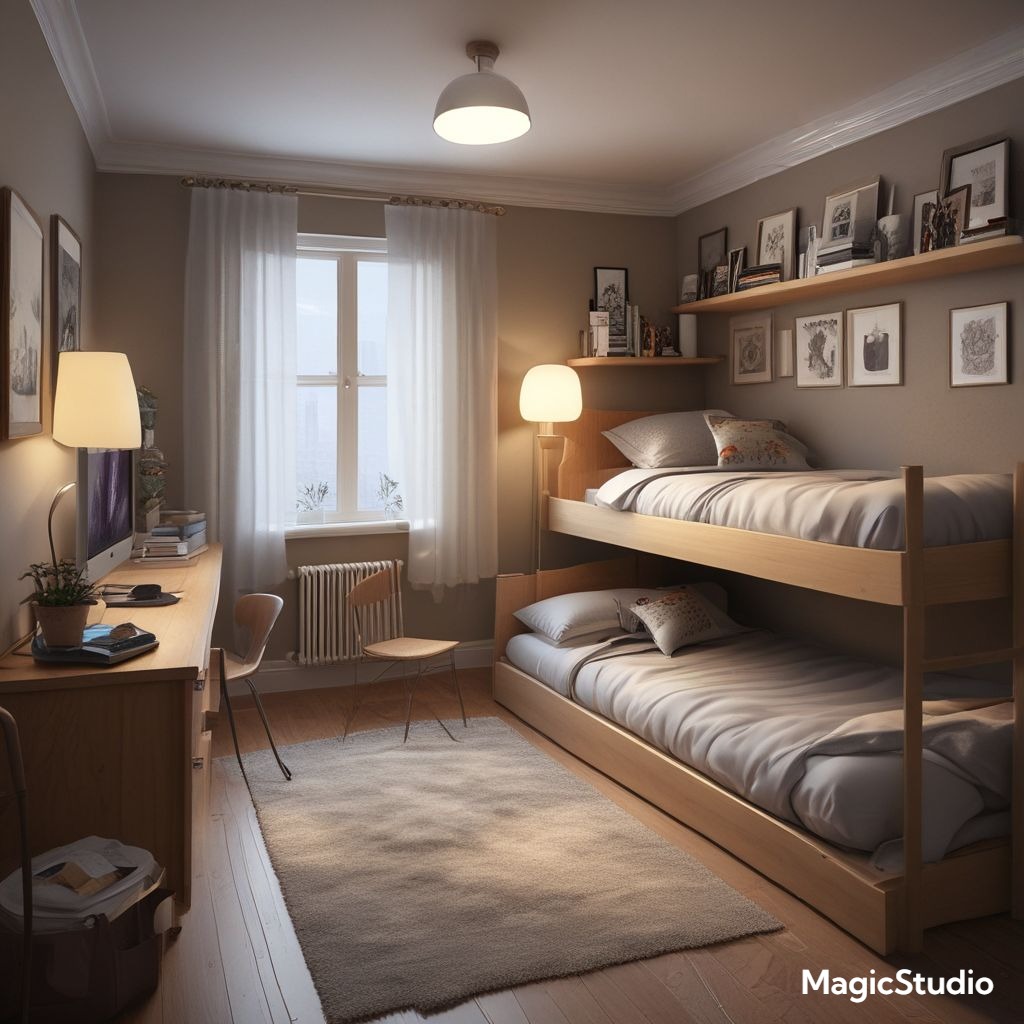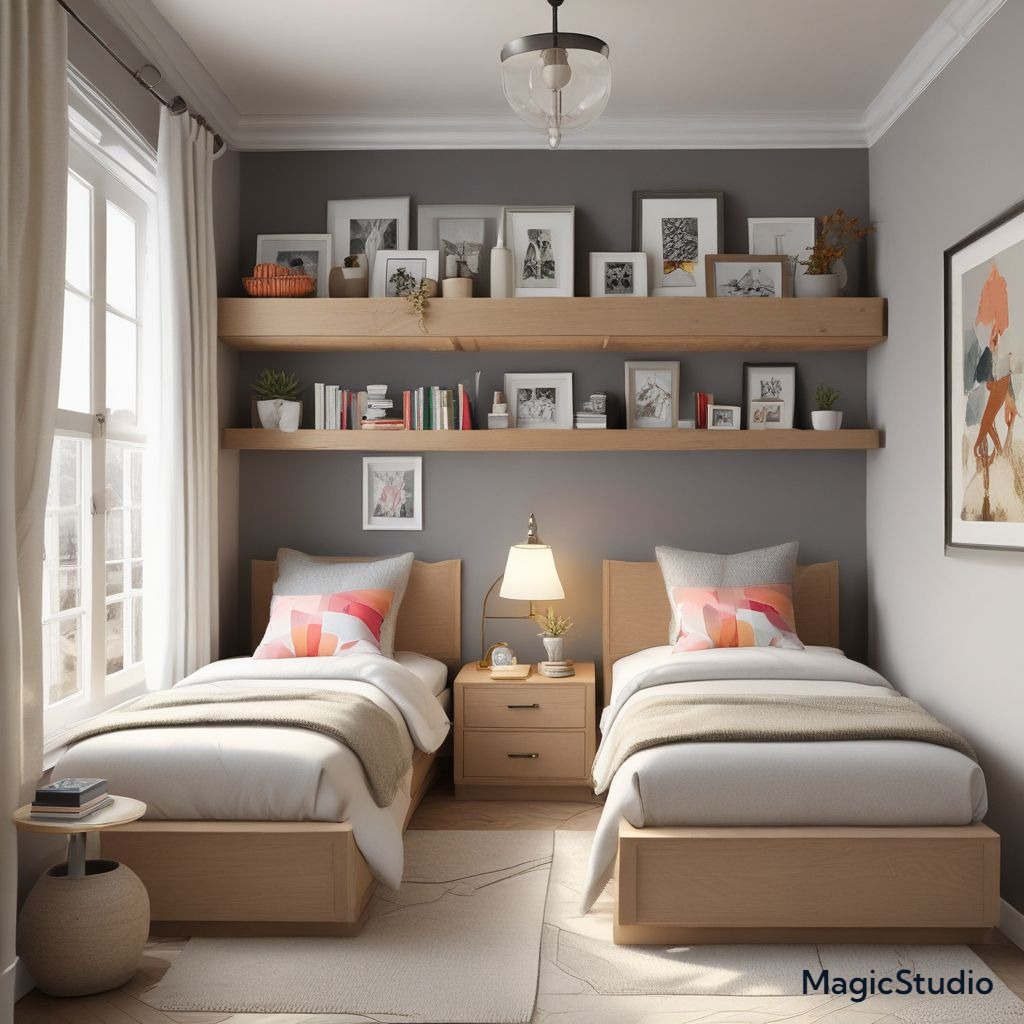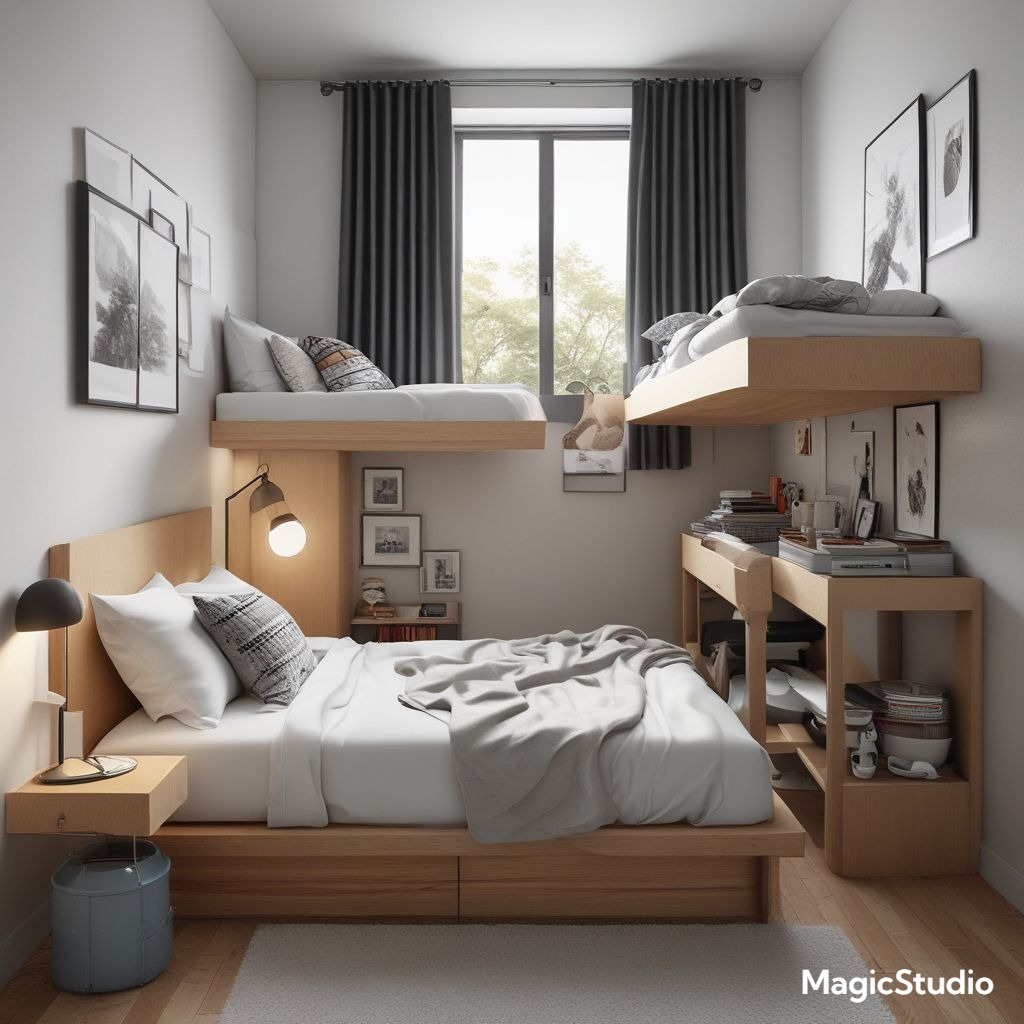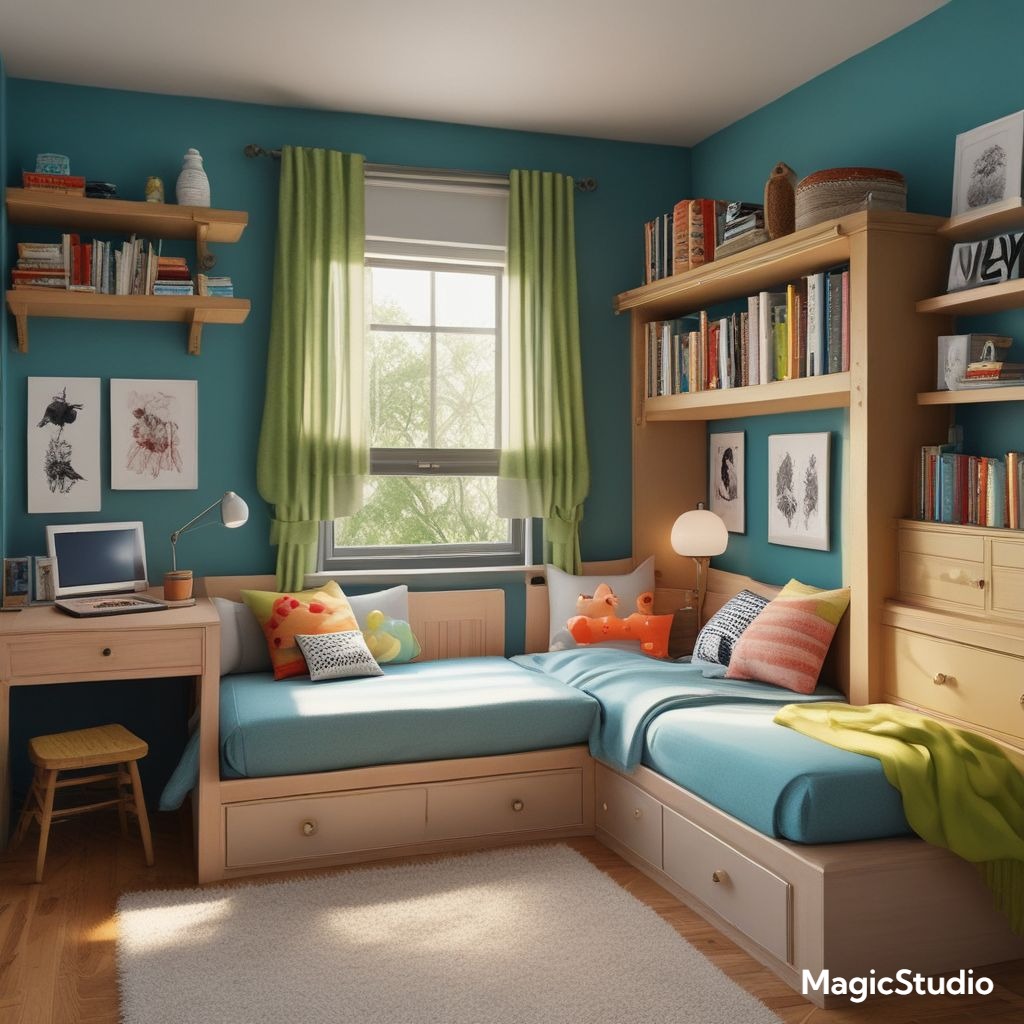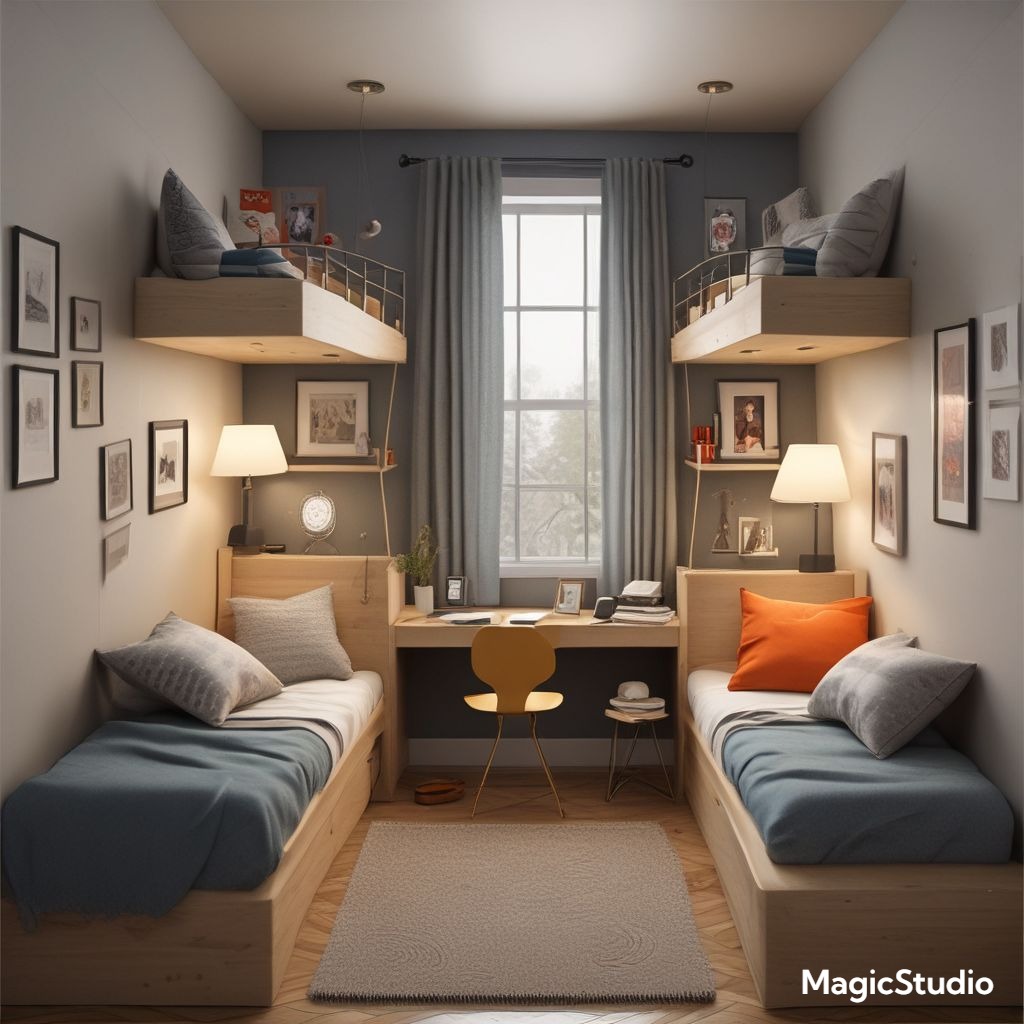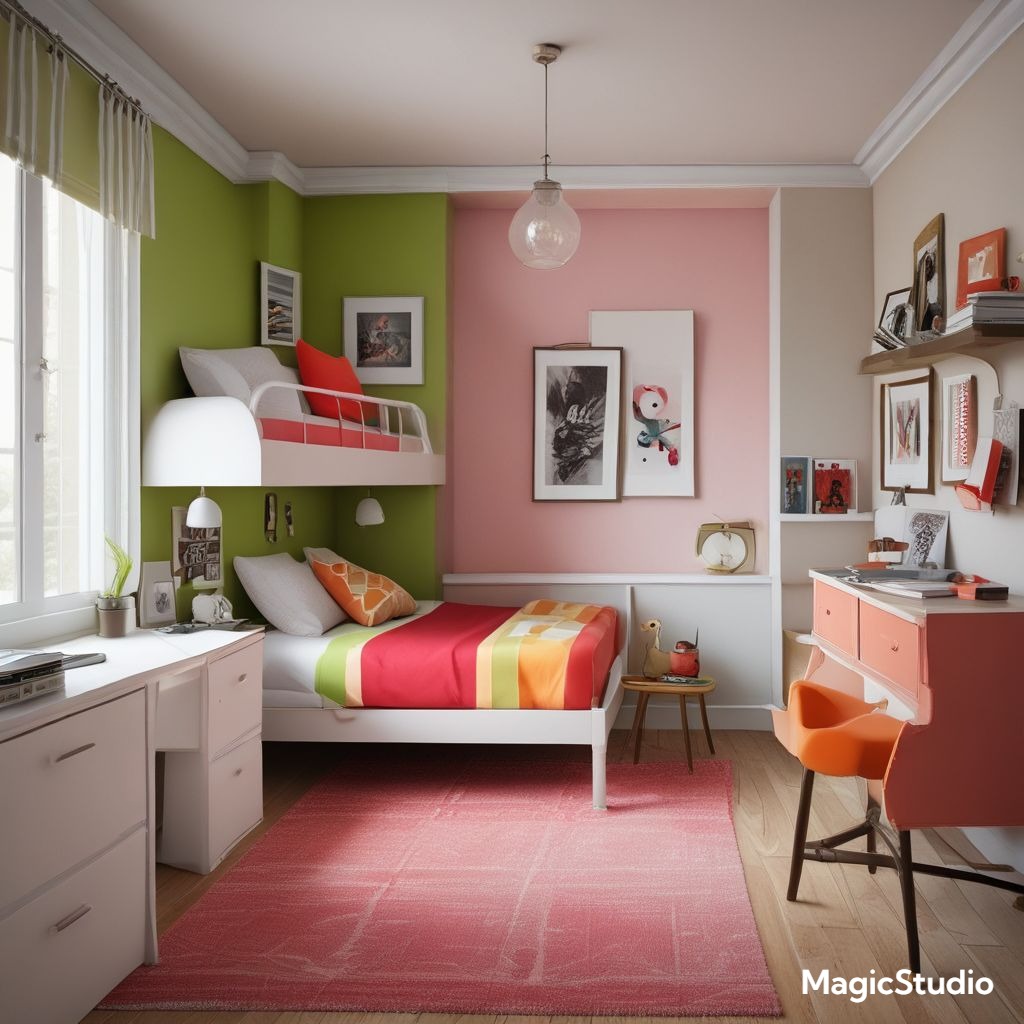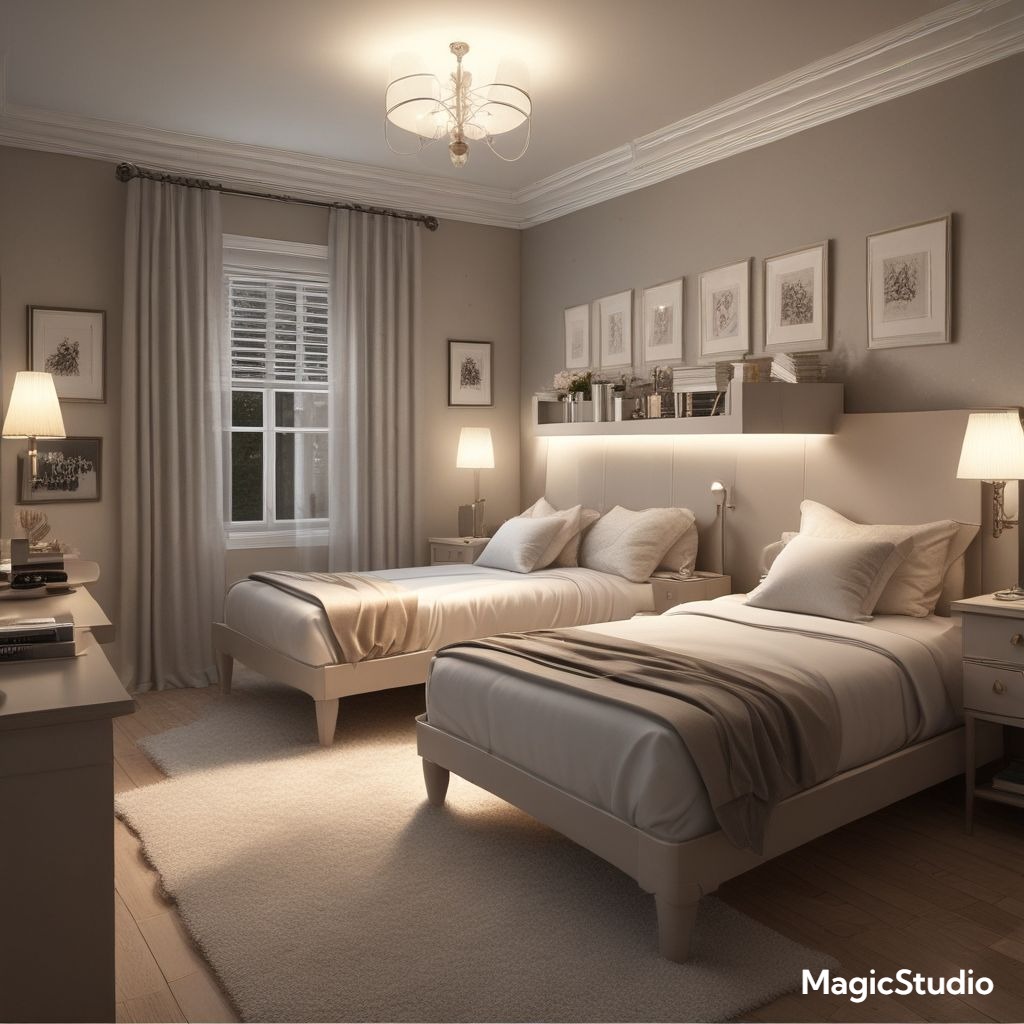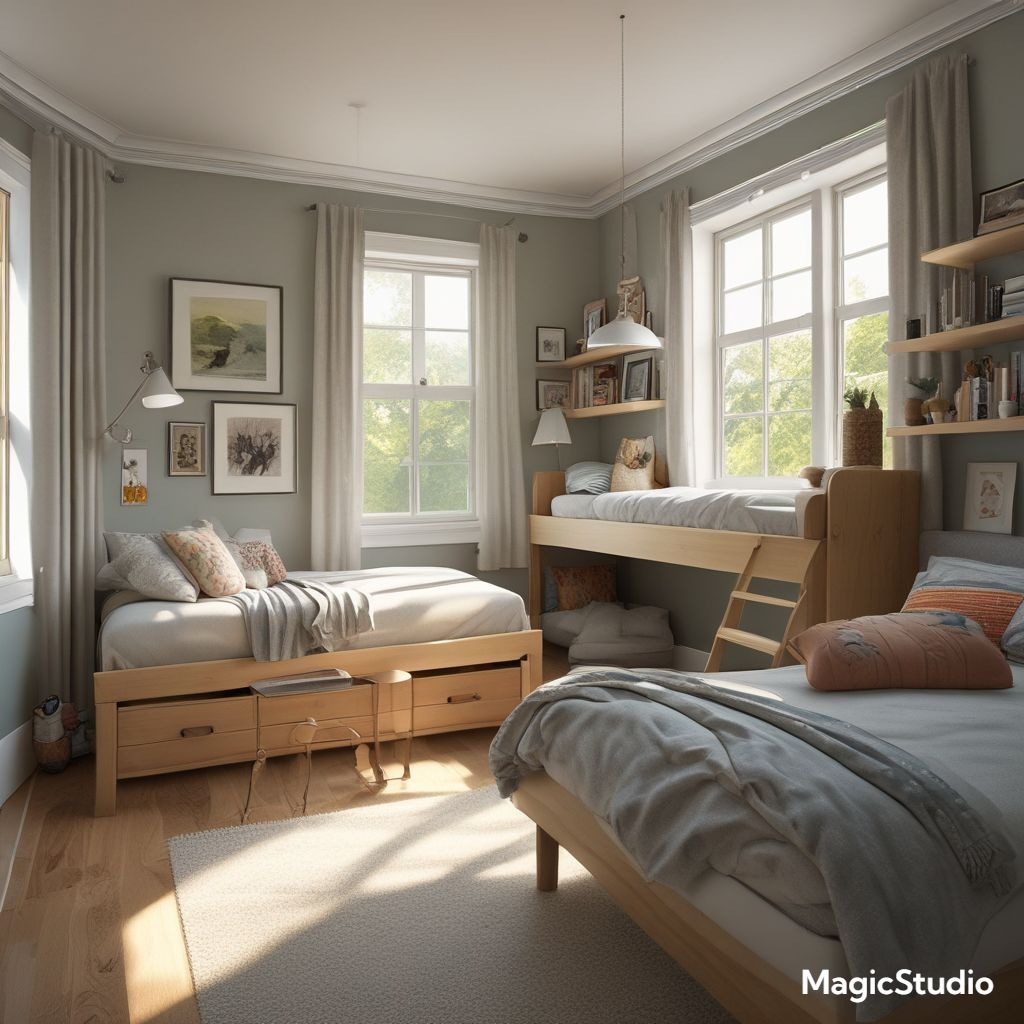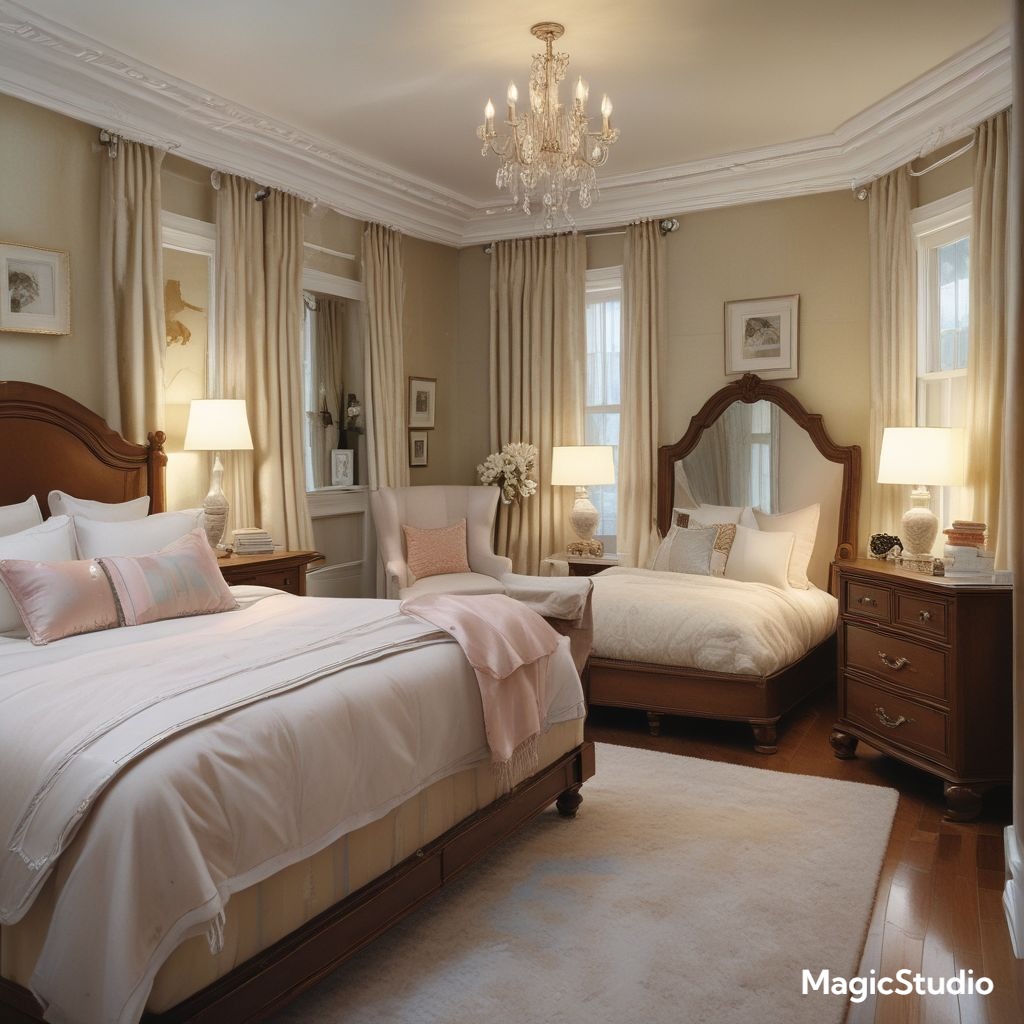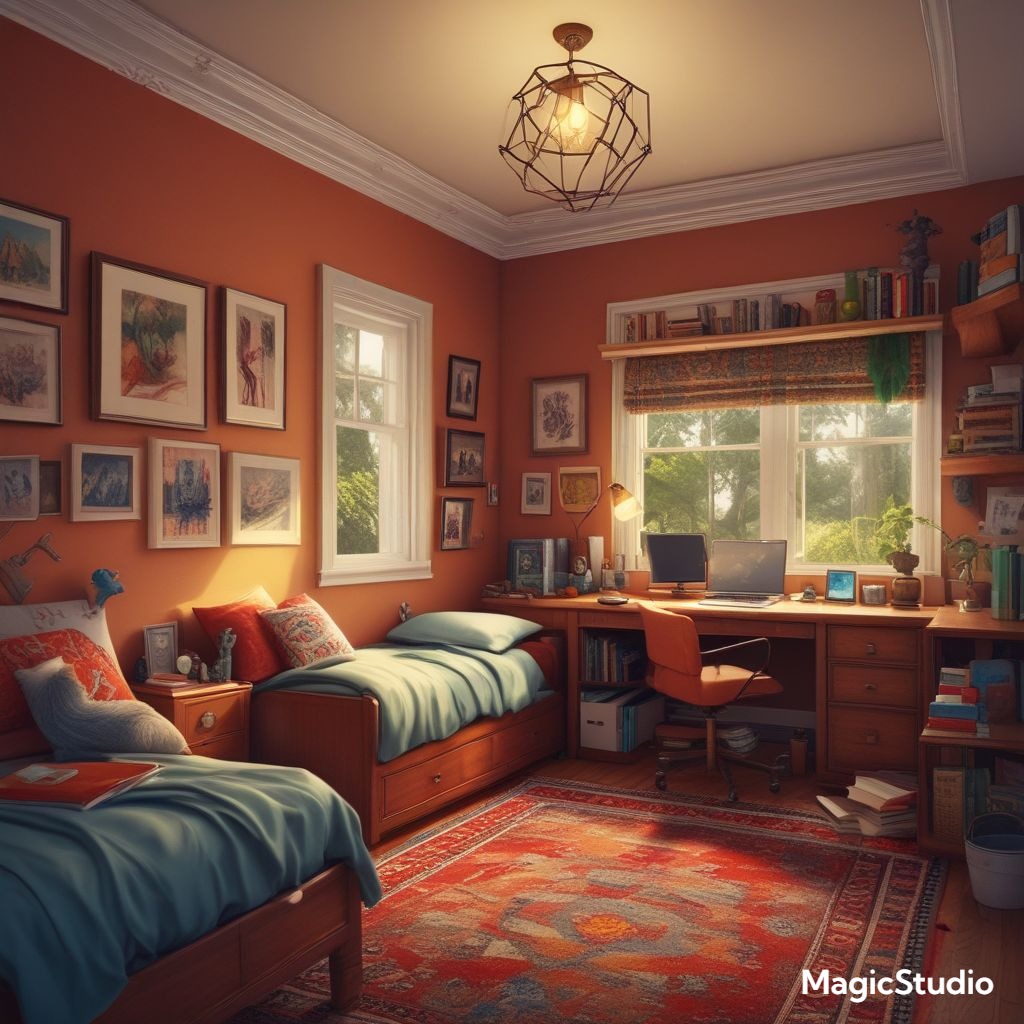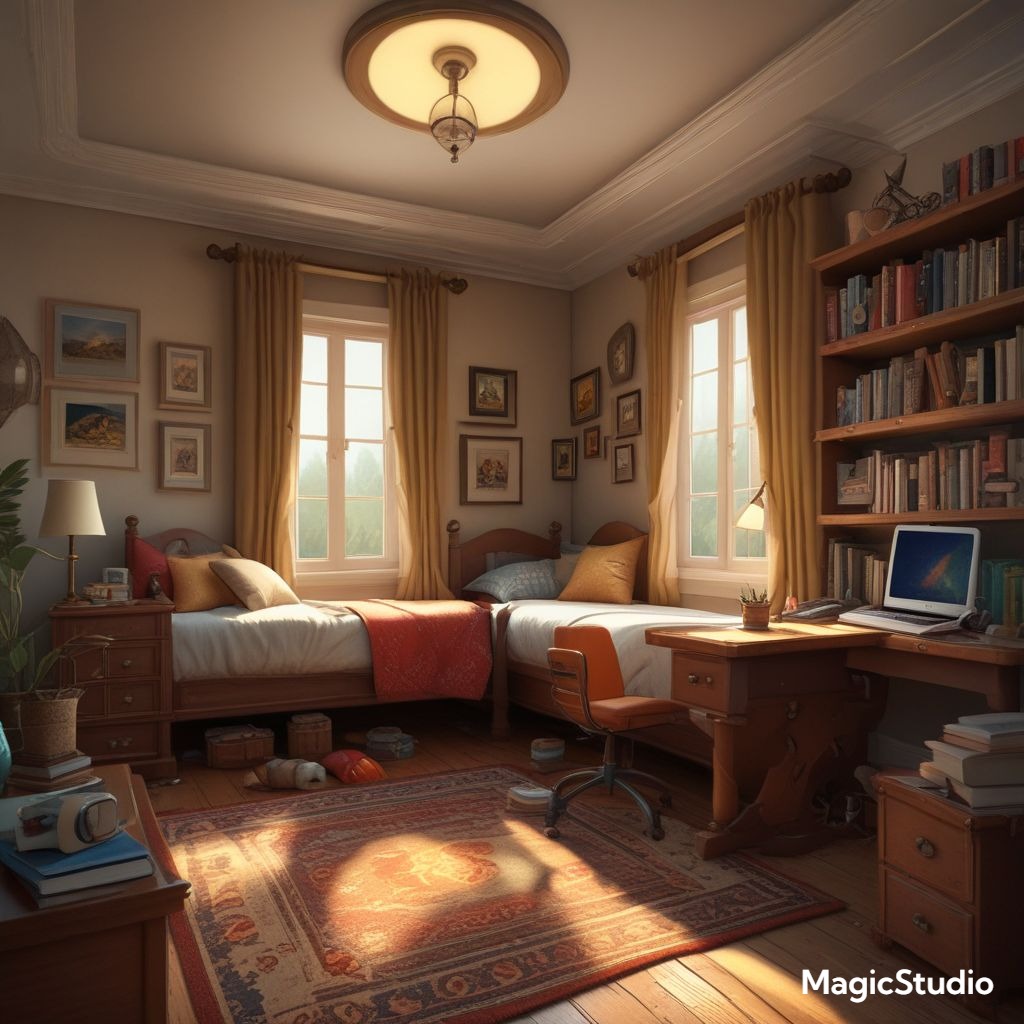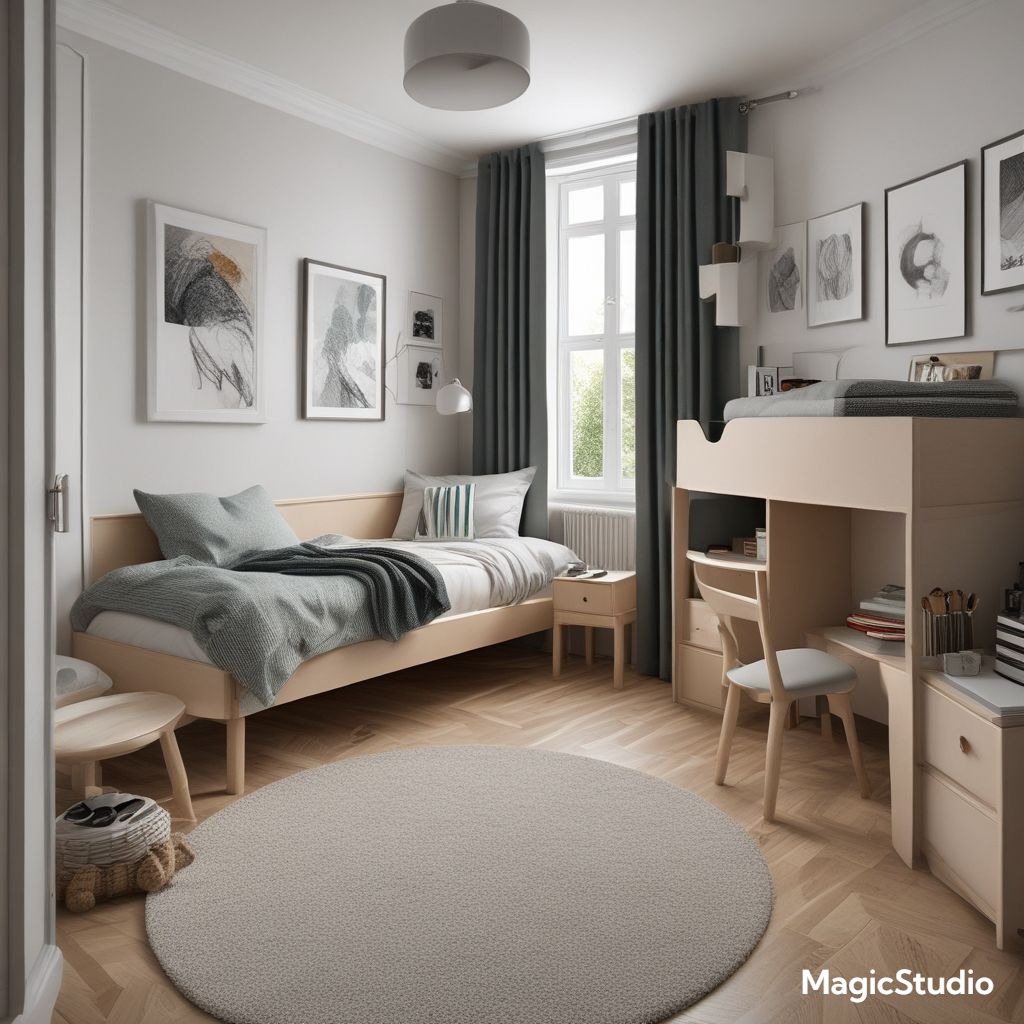Sharing a bedroom is a common occurrence for siblings, and when it comes to four kids, the challenge of creating a functional and stylish space becomes even more complex. But don’t despair! With a little creativity and planning, you can transform a small bedroom into a haven for your little ones, fostering both individual expression and harmonious coexistence. This article will explore a range of design ideas, blending practicality with visual appeal, to help you create the perfect space for your four children.
Neutral Hues with Pops of Color
A versatile approach for a small bedroom is to embrace a neutral color palette – think soft creams, whites, grays, and light blues. This provides a calming backdrop and allows you to incorporate pops of color through bedding, rugs, and artwork. This strategy is especially effective in smaller spaces as it helps to visually expand the room. For a contemporary feel, incorporate geometric patterns in your textiles, and consider adding some greenery with potted plants to infuse a touch of nature. This trend is popular in both the US and EU, reflecting a desire for simplicity and versatility.
Themed Bunk Beds: A Space-Saving Solution
Bunk beds are a staple in small bedrooms for good reason! They save valuable floor space while adding a playful touch. Instead of opting for standard bunk beds, consider a themed bunk bed design. For instance, a pirate-themed bunk bed with a ship-shaped top bunk and a ladder resembling a rope could be a hit with your little adventurers. You can even add a canopy for the top bunk to create a whimsical haven. This design choice is popular in the US and EU, with a growing emphasis on creating imaginative and engaging spaces for kids.
Embrace the Power of Pattern
Small spaces can benefit from patterned textiles, but the key is to choose them wisely. Rather than overwhelming the room with too many patterns, select one or two key pieces with bold patterns and complement them with solid color items. For instance, you could opt for a patterned rug with a geometric design and pair it with solid-colored curtains and bedding. This approach adds visual interest without making the space feel cluttered. This trend is particularly prevalent in the EU, where interior design often emphasizes pattern and texture.
Vertical Storage: Maximize Space
When space is limited, vertical storage is your best friend. Wall-mounted shelves, cubby organizers, and hanging storage solutions can free up valuable floor space. Consider a combination of open and closed storage options, allowing your children to easily access their belongings while keeping the space organized. This strategy is particularly popular in the US, where efficiency and functionality are highly valued in small spaces.
Playful and Functional Furniture
Don’t limit yourself to traditional furniture pieces. Incorporate multi-functional furniture that serves double duty. A storage ottoman can serve as a comfortable seat and a storage space for toys or books. A desk with built-in drawers can be used for homework and craft projects. This approach is increasingly popular in the EU, as consumers seek furniture that combines functionality and style.
Create Zones Within the Space
Even in a small bedroom, you can create designated zones for different activities. Use rugs, furniture arrangements, and color accents to define distinct areas. For example, a reading nook with comfortable seating and soft lighting, a play area with a rug and toys, and a quiet study area with a desk and good lighting. This design principle is popular in both the US and EU, as it fosters organization and allows for designated spaces for different activities.
Color Blocking for a Bold Statement
For a visually striking and modern look, consider color blocking. Divide the walls into sections and paint each section a different color. This technique is especially effective in small bedrooms as it adds visual interest and can help to define different zones within the space. For a harmonious look, choose complementary colors or shades of the same color. This trend is particularly popular in the US, where bold and vibrant color palettes are often embraced.
The Power of Lighting
Lighting plays a crucial role in shaping the mood and functionality of a space. Use a combination of ambient, task, and accent lighting to create a well-lit and inviting atmosphere. For instance, a ceiling fixture provides ambient lighting, a desk lamp offers task lighting, and a string of fairy lights adds a whimsical accent. This approach is widely embraced in both the US and EU, as lighting is recognized as an essential element of interior design.
Embrace the Minimalist Aesthetic
A minimalist approach can help to create a sense of spaciousness in a small bedroom. Focus on essential furniture pieces and keep decor to a minimum. Opt for clean lines and neutral colors, and choose furniture with built-in storage solutions. This trend is particularly popular in the EU, reflecting a desire for simplicity and functionality.
Embrace Natural Light
Maximize natural light by keeping windows uncovered and using light-colored curtains or blinds. This helps to create a bright and airy atmosphere. Consider incorporating mirrors to reflect natural light and further amplify the sense of space. This is a popular design principle in both the US and EU, as natural light is recognized for its positive impact on mood and well-being.
The Magic of Mirrors
Mirrors are a designer’s secret weapon for creating the illusion of more space. strategically placed mirrors can reflect light and create a sense of depth. Use large mirrors on one or more walls to visually expand the room. This trick is particularly effective in small bedrooms, where every inch counts. This trend is widely embraced in both the US and EU, as mirrors are recognized for their ability to enhance the perceived size of a space.
Personalized Touches
Incorporate personal touches that reflect each child’s unique interests and personalities. Allow them to choose their bedding, artwork, and decorative accents. This can range from a favorite superhero poster to a collection of seashells. This personalization helps to create a sense of ownership and belonging. This is a universal trend, as personalization is a key aspect of creating a space that feels truly homey.
Create a Cozy Reading Nook
A designated reading nook can provide a quiet escape for your children to unwind and lose themselves in a good book. Use a comfortable armchair or beanbag chair, a small bookshelf, and soft lighting to create a cozy and inviting space. This is a popular trend in both the US and EU, as reading nooks are seen as a way to encourage a love of reading and provide a quiet space for relaxation.
A Versatile Play Area
A versatile play area can be easily transformed to suit different activities. For example, a rug with a built-in play area can be used for imaginative play, board games, or arts and crafts. This approach is popular in the US, where play areas are seen as an essential element of a child’s bedroom.
Embrace a Scandinavian Style
The Scandinavian style is characterized by its simplicity, functionality, and use of natural materials. This approach is perfect for small bedrooms, as it emphasizes clean lines, light colors, and natural light. Incorporate elements such as wooden furniture, natural textiles, and soft lighting to create a calming and inviting space. This style is gaining popularity in both the US and EU, as it embodies a sense of minimalism and serenity.
A Modern Industrial Look
For a more edgy and contemporary feel, consider a modern industrial style. This style is characterized by its use of metal, concrete, and exposed brick. Incorporate elements such as metal bed frames, industrial-style lamps, and reclaimed wood accents. This style is particularly popular in the US, reflecting a growing appreciation for raw and industrial aesthetics.
